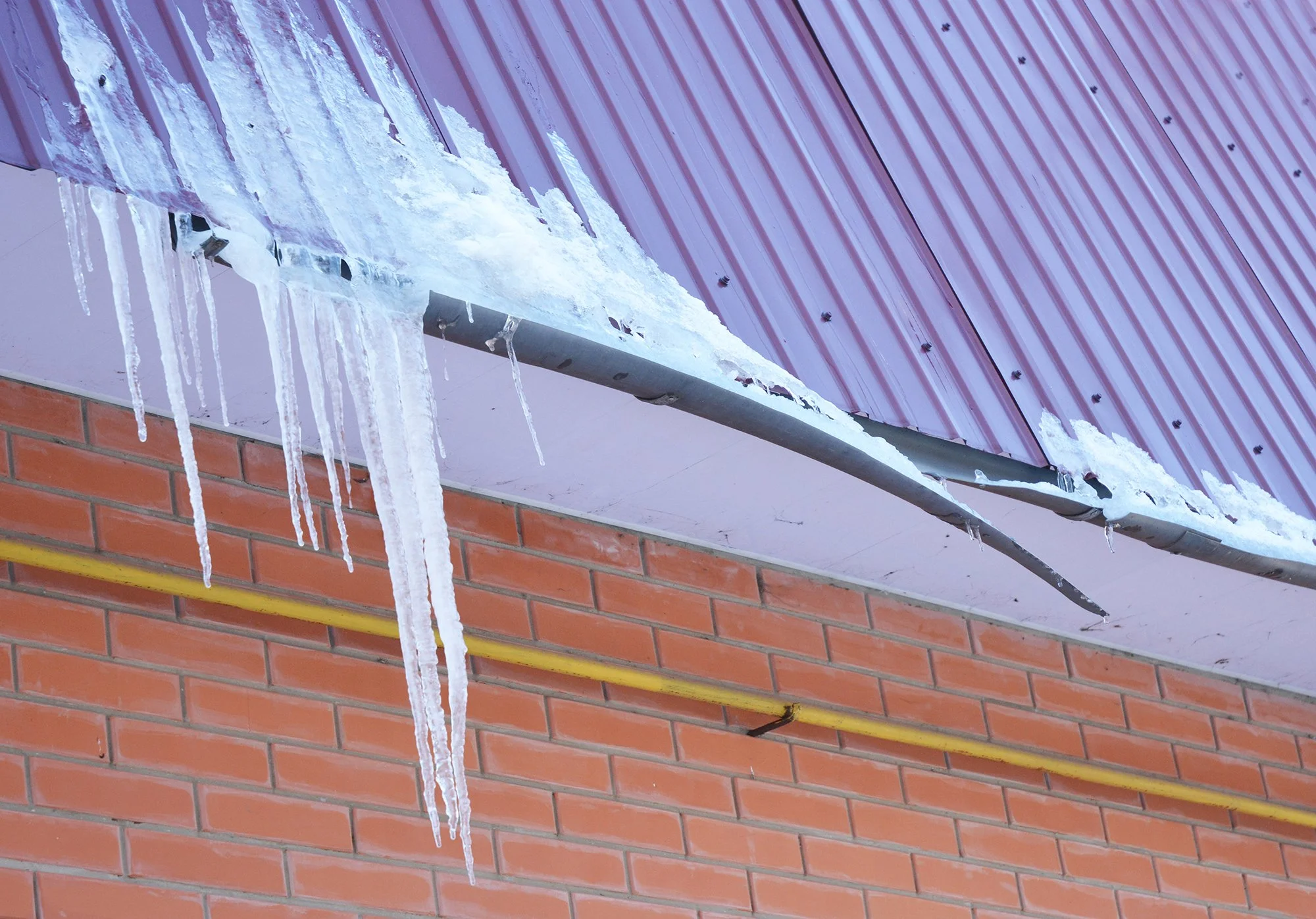Winterizing Your Roof: The Cold Hard Facts
Ice dams, heat loss and structural damage are real threats to churches and nonprofits. Take action now.
When it comes to building maintenance, prevention pays off. But sometimes a critical component gets left out: your roof. It’s out of sight and – unless there’s a problem – usually out of mind.
Previously, we’ve written about the hazards of frozen pipes. That’s threat number one. But your roof is a close second. A little effort now could prevent major disruptions.
Although some churches and nonprofits could DIY roof winterization, we recommend a professional inspection. Why?
A reputable roofer can identify risks a layperson would miss – such as structural concerns or damage to underlying waterproofing membranes. They are also attuned to finer points, such as identifying granule loss on asphalt shingles – a potential indicator or roof failure. In addition, climbing up on a roof is risky business – especially if it’s wet, icy or snow covered. Unless you want a circus-like aerial experience, it’s better to leave it to the professionals. In addition to physically inspecting the roof, contractors use drones to get closeup views of hard-to-reach places, providing a comprehensive assessment.
Whether you DIY or contact a pro, roof winterization should include the following items on this checklist.
“Compromise makes a good umbrella, but a poor roof.”
Seal the deal
Like every part of a building, roofs can develop gaps and leaks. Replacing damaged shingles and sealing gaps can prevent heat loss and water damage.
Declutter the gutter
When leaves, sticks and other debris fill gutters, it can cause water to pool, freeze and leak. This simple act of gutter maintenance can prevent significant water damage to your building. This is more than a one-time seasonal event. Keep an eye on your roof and remove the buildup of debris that can make its way to the gutters. In addition, consider installing quality gutter guards to help prevent backups.
Trim the limb
If your facility has large tree branches over its roof, trim them back to prevent falling branches.
Assess your attic
Older facilities may have minimal insulation because codes were less stringent when they were built. This leads to escaping heat and higher utility bills and can exacerbate the problem of snow and ice buildup. Insulation’s thermal resistance is rated by what are called R-values. The U.S. Department of Energy has created an R-value map with recommendations for geographic regions of the United States. This is a helpful tool to use in tandem with having a professional inspect your insulation and attic. Interior leaks should be sealed. In addition, your attic needs to be well ventilated, so make sure intake and exhaust vents are not blocked by snow, ice or debris. An attic inspection may also reveal water stains from previously unknown leaks. Addressing them can help you avoid costly damage later.
Break the dam
Melting snow and rain can refreeze around the eave of a roof and create a destructive buildup known as an ice dam. It can push moisture underneath roofing, leading to water damage. Be alert to ice buildups and employ a professional to remove them.
Throw the snow
Excessive snow accumulation can stress roofs and cause structural damage and the buildup of ice dams. Contract with a professional to remove heavy snow. Although you could do it yourself, you may damage the roof or injure yourself: An icy roof is a hazardous work environment.
Just do it
Busy nonprofit and church leaders have a lot on their plates. But explosive water damage will only increase your responsibilities and stress. Take action now to prevent damage, disruption and costly repairs.
“The time to repair the roof is when the sun is shining.”
Get a free insurance checkup from Ministry Pacific
Consultations with our non-commissioned team are always free. Let us know how we can be of service today. You can also contact us at 1.866.870.2700.



